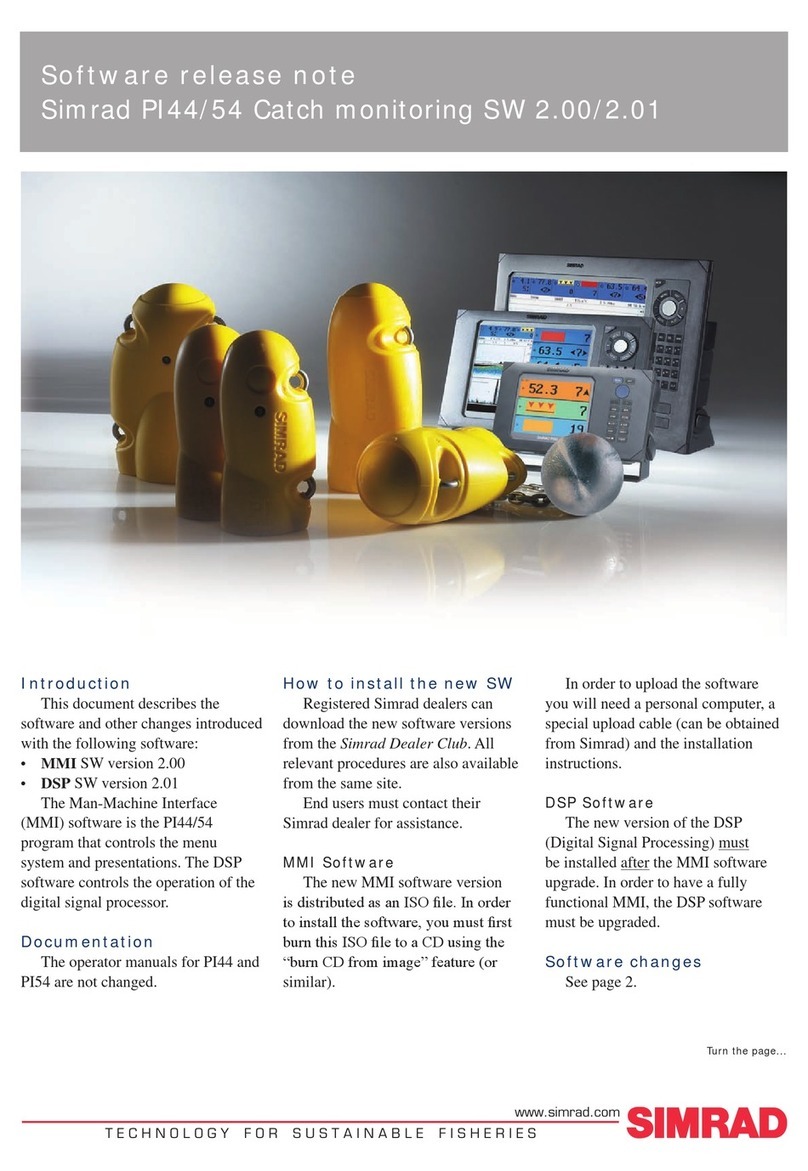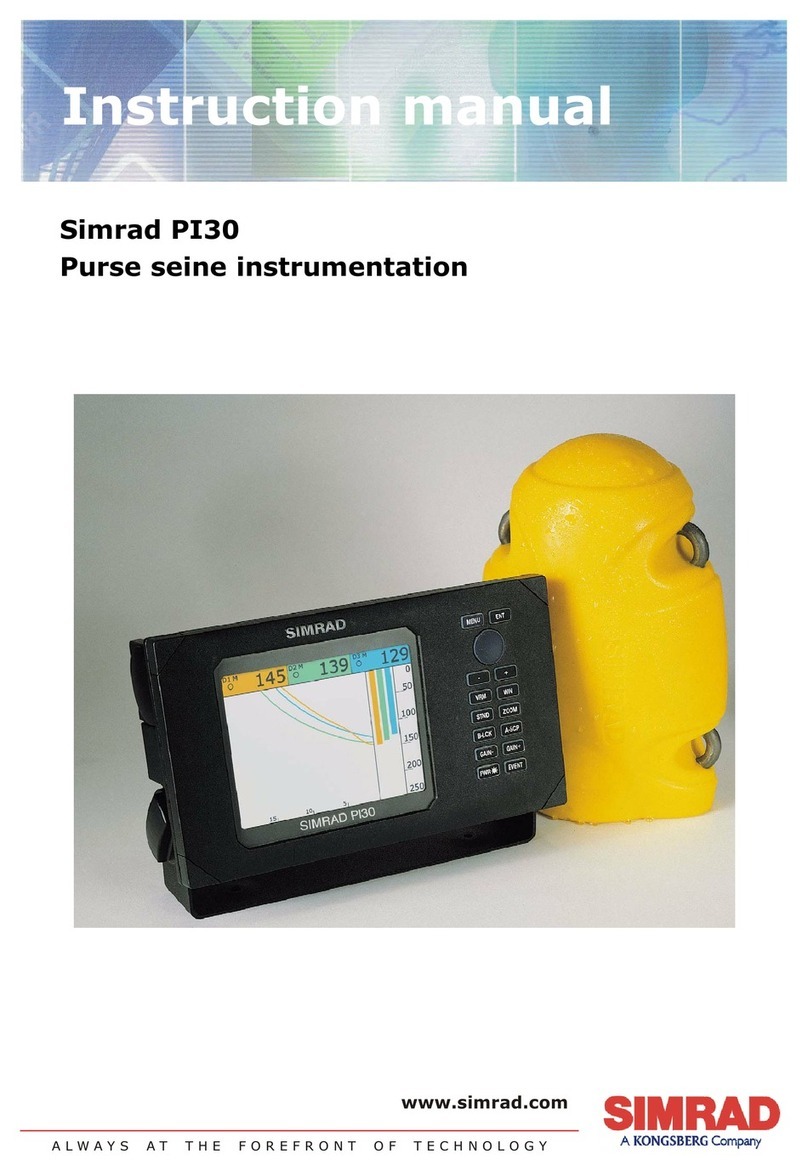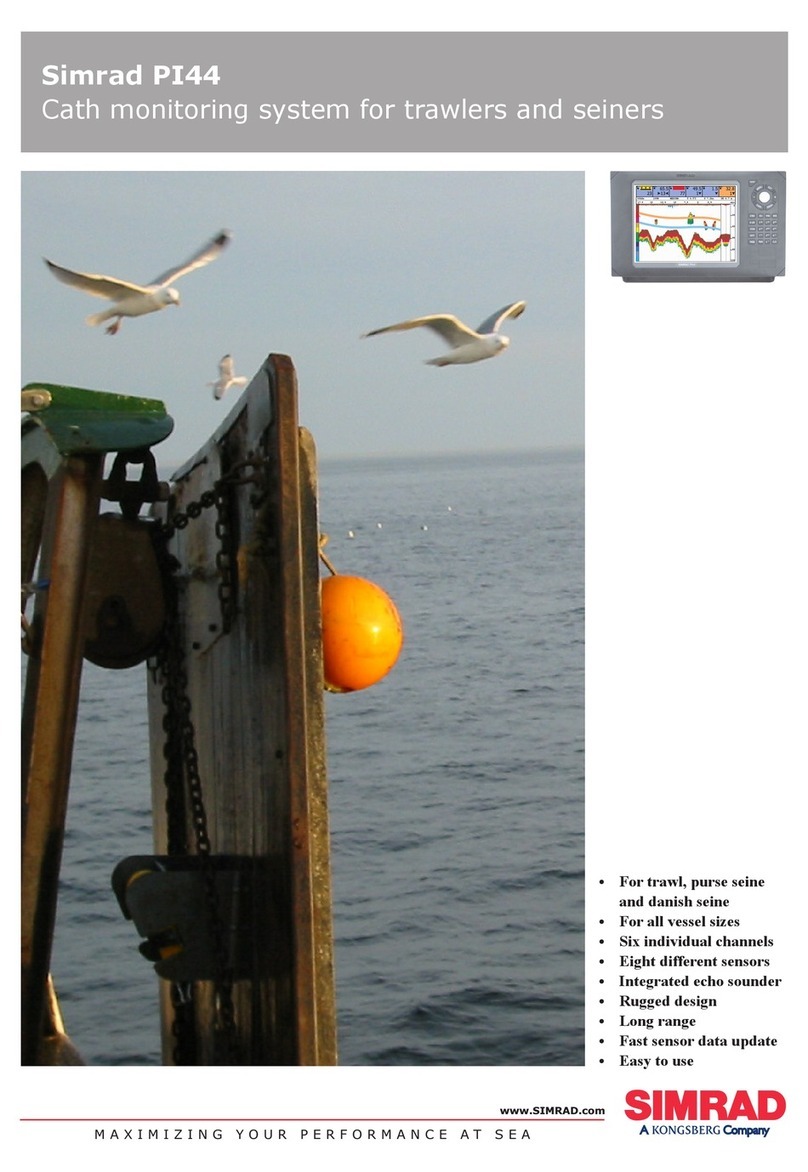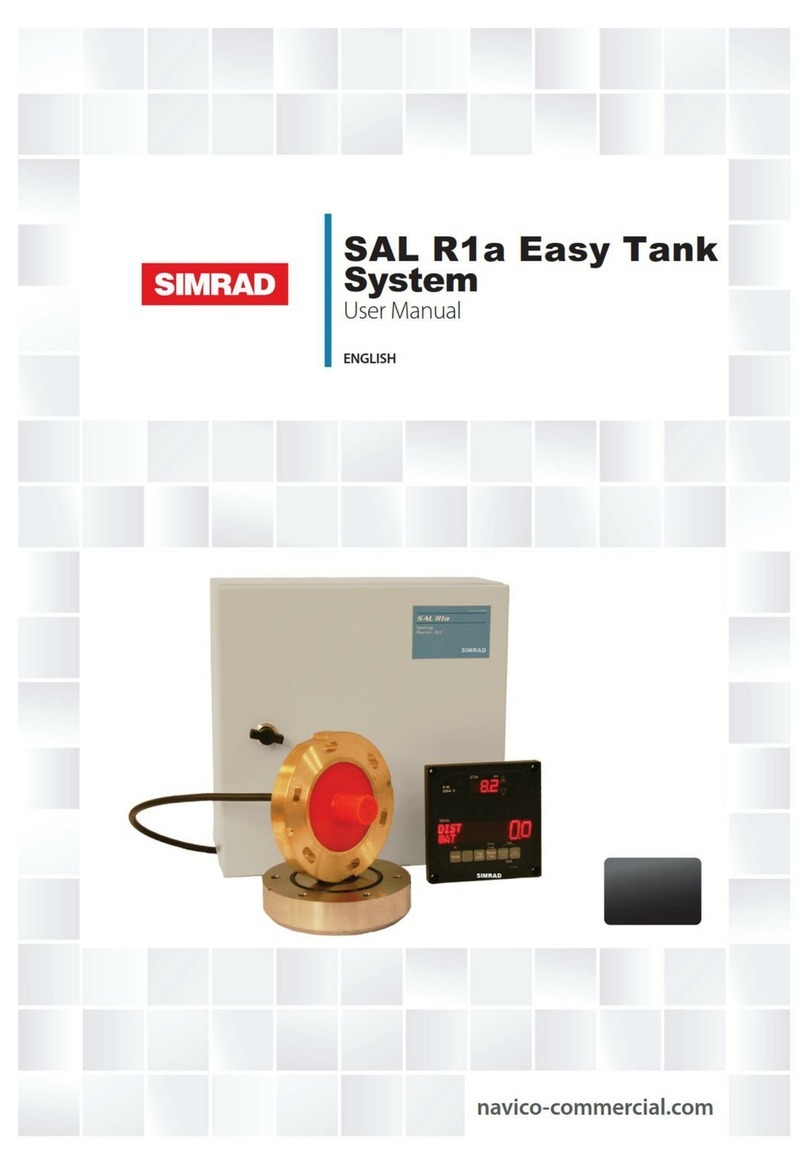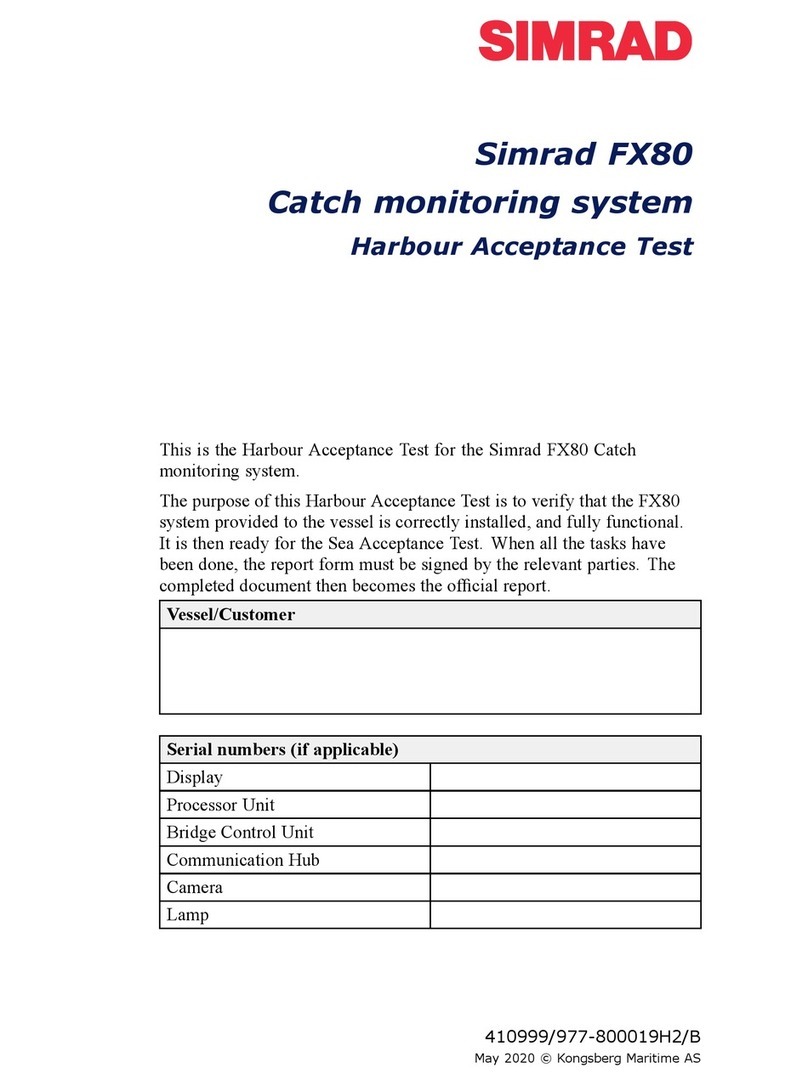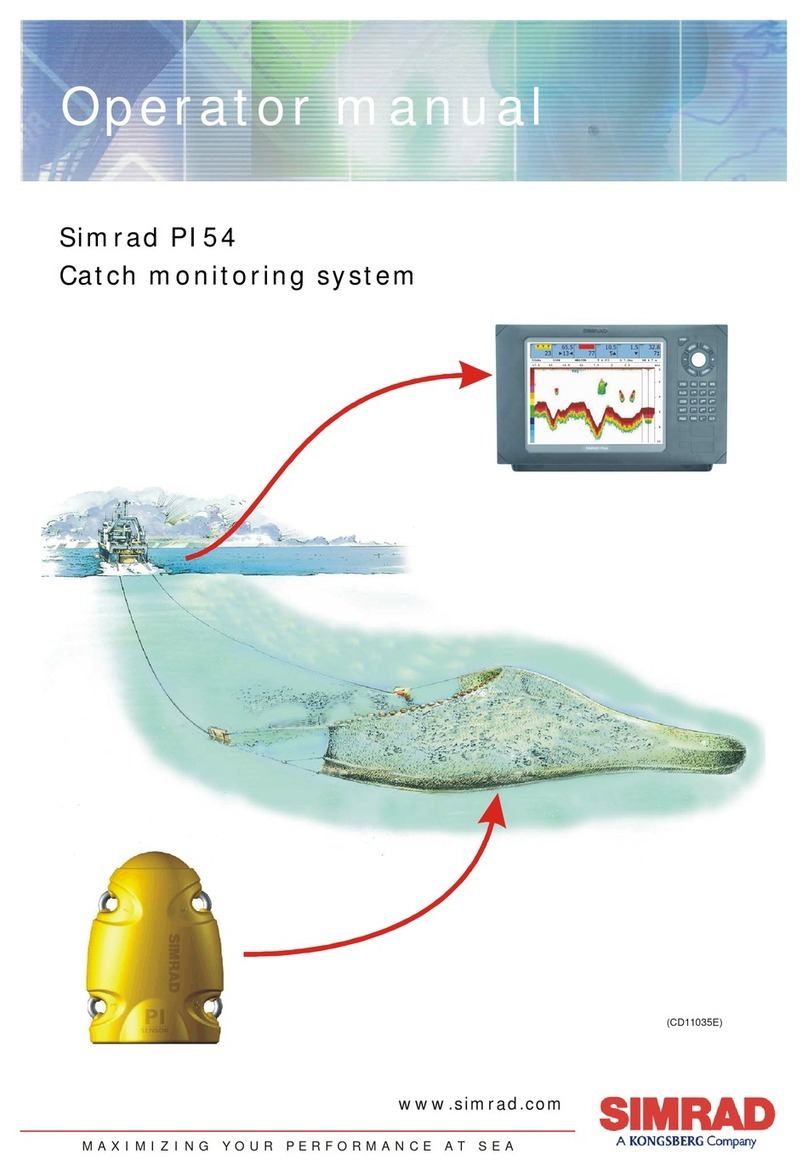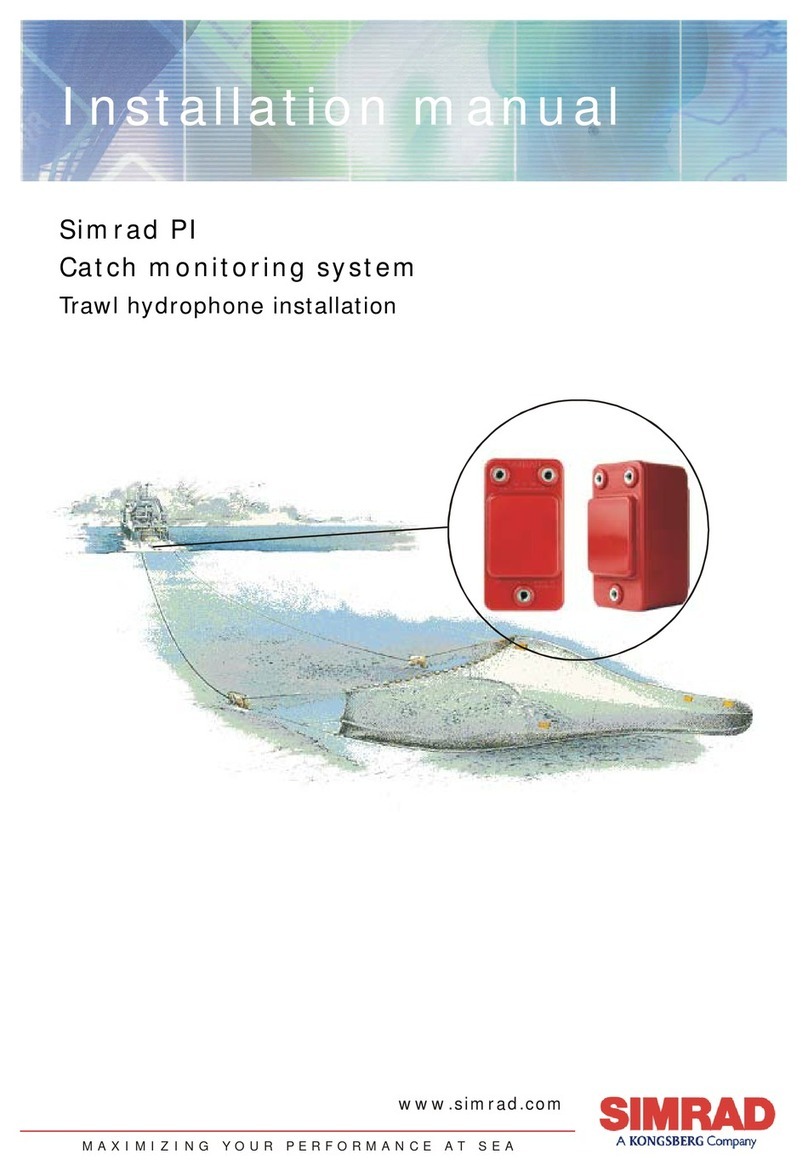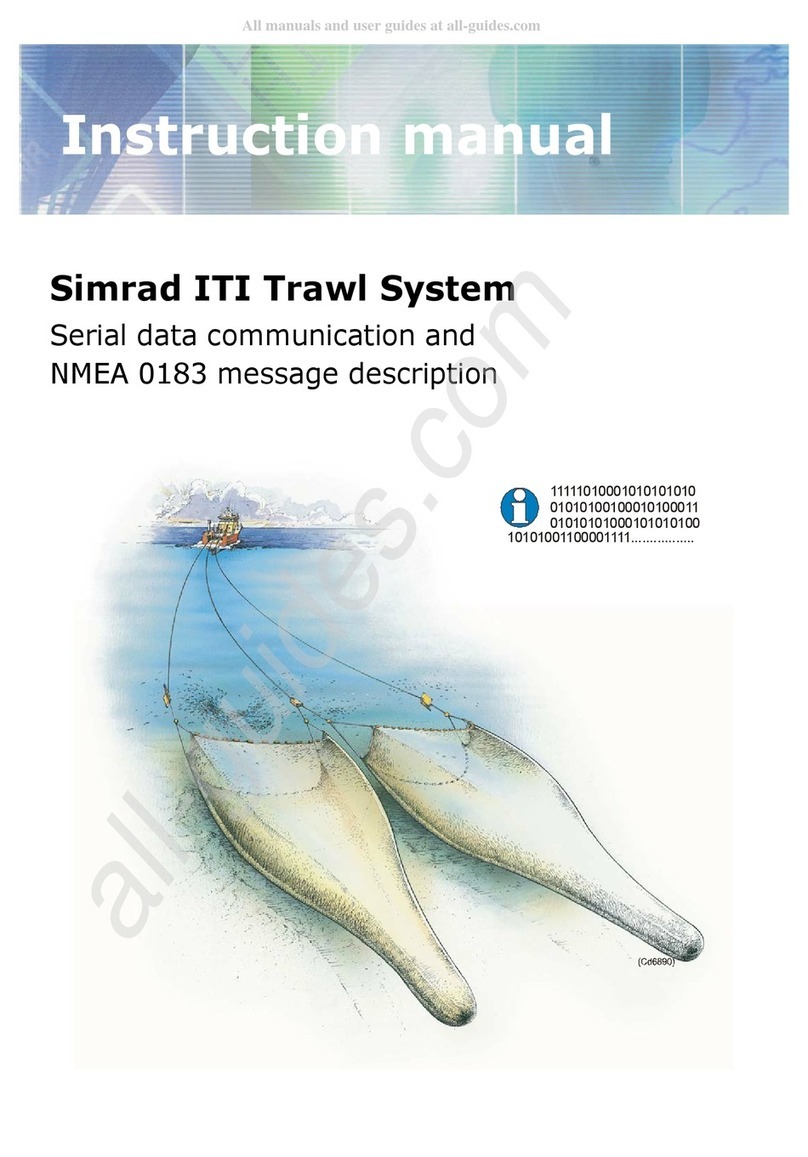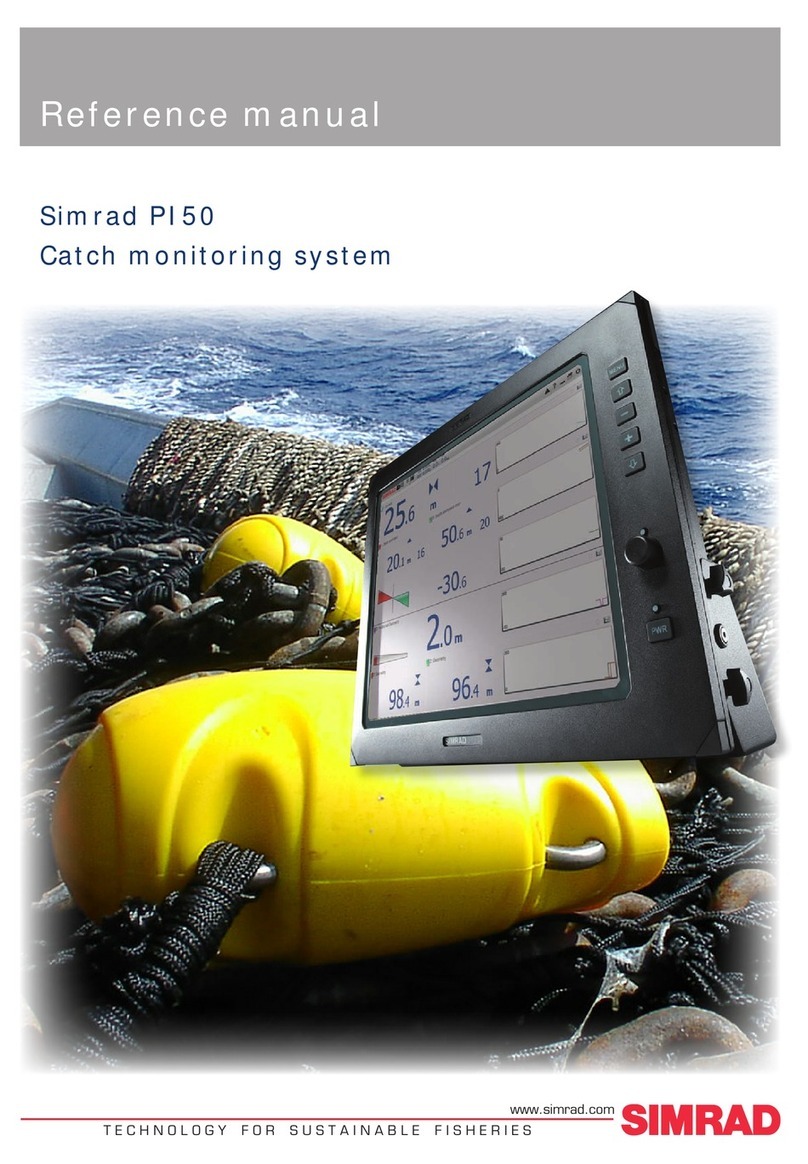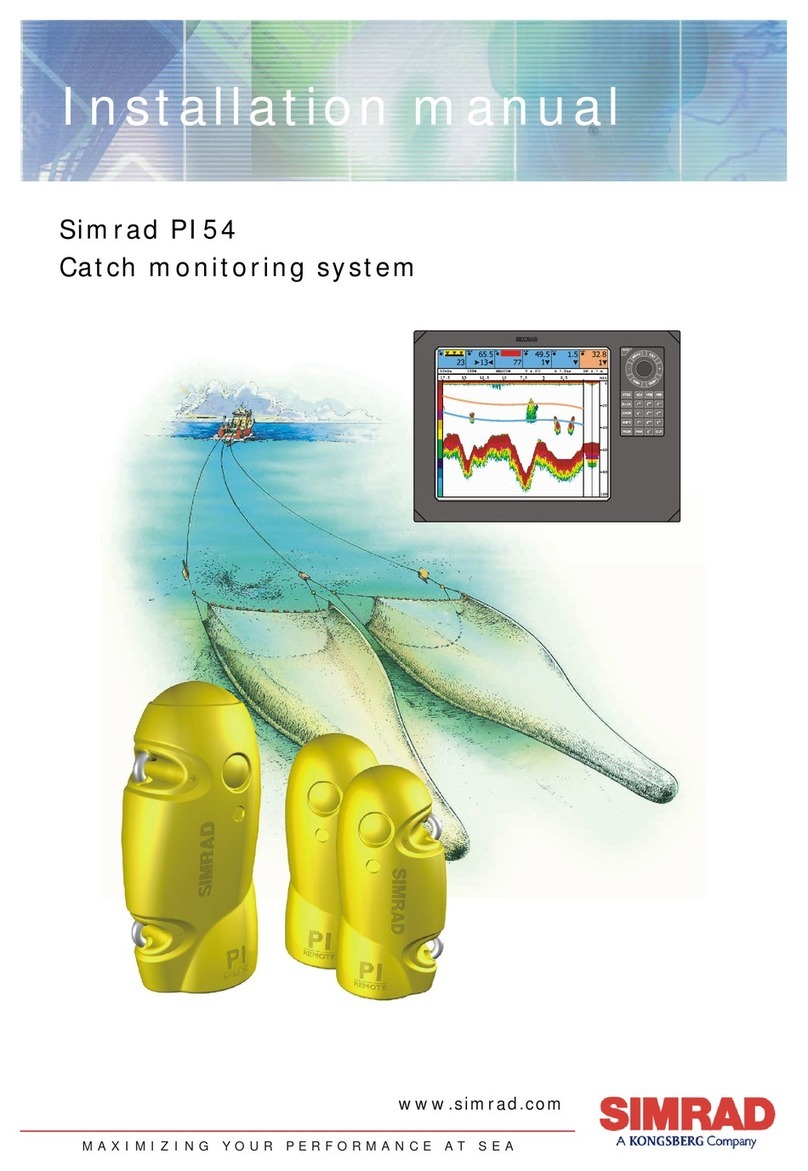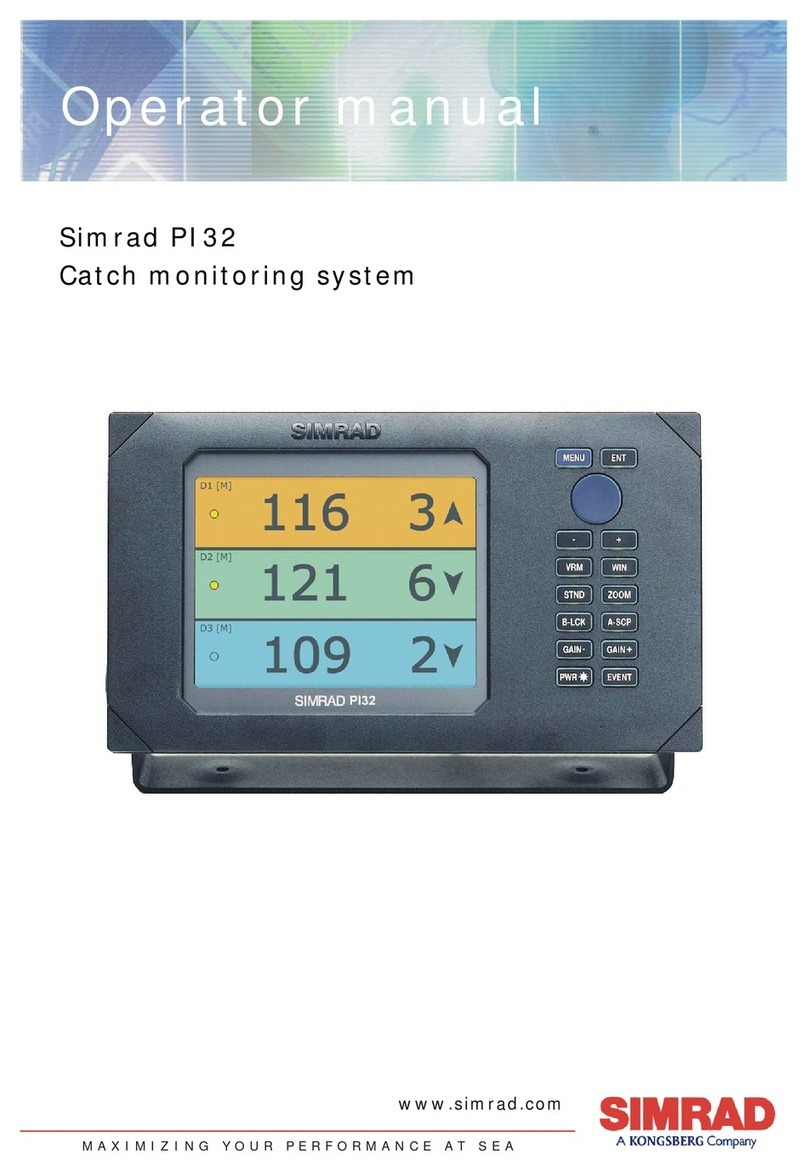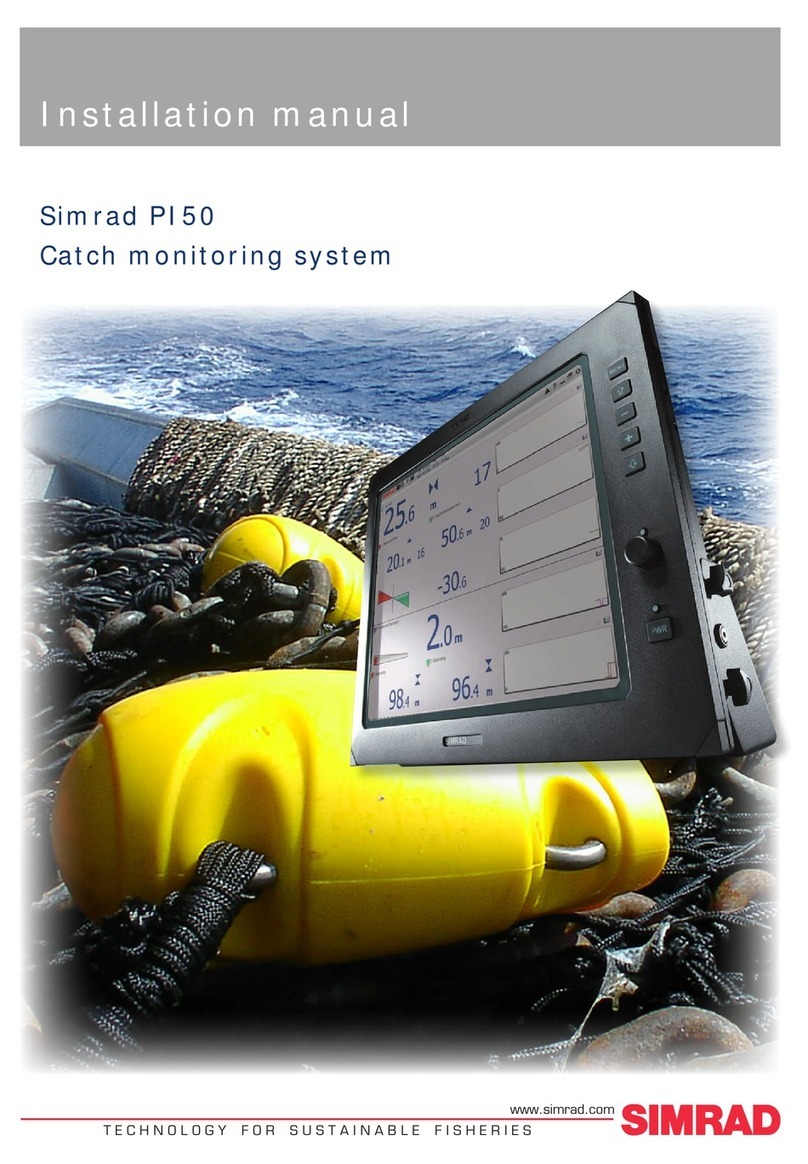Installation manual
3
851-164149 / Rev.D
Considerations
Correct installation of the PI hydrophone is vital to the system’s
performance. Several variables must be taken into consideration,
the most important of which is the vessel’s construction. This
guide is for use in selecting the best location for the hydrophone
and includes a brief description of areas to be avoided.
Note: Simrad strongly suggests that this information is read
thoroughly, and that the instructions are understood and
followed. Proper hydrophone placement is difficult to achieve,
but essential for correct system operation.
Depth
Water just below the sea surface contains a myriad of small air
bubbles created by the turbulence of breaking waves. The first
five to ten metres may be heavily saturated in moderate seas
with the greatest concentration and largest bubbles closest the
surface. Air bubbles disrupt sound waves in water. The degree
to which they absorb and reflect such energy vary, but in some
cases they can block hydrophone reception. It is therefore
recommended to mount the unit as deep as possible.
Pounding danger
When a vessel is in ballast and pitching in heavy seas, it is
important that the hydrophone is not lifted out of the water.
Should a vessel pound so heavily that the hydrophone be
exposed, sound reception will be interrupted and the unit may
be damaged on impact.
The boundary layer
The flow of water in the immediate vicinity of the hull of a
moving vessel is known as a boundary layer. This flow is
responsible for underwater noise that can disturb hydrophone
reception and its thickness is contingent on a vessel’s:
•Hull form
•Size and number of underwater protrusions
•Velocity
•Hull roughness
The boundary layer is thin (laminar flow) near the vessel’s bow
and becomes thicker (turbulent flow) as it moves aft. Laminar
flow is smooth with streamlines approximately parallel to the
hull and contributes relatively little to noise created by flow.
Conversely, turbulent flow is more disorderly and in turn
contributes to a greater extent.
